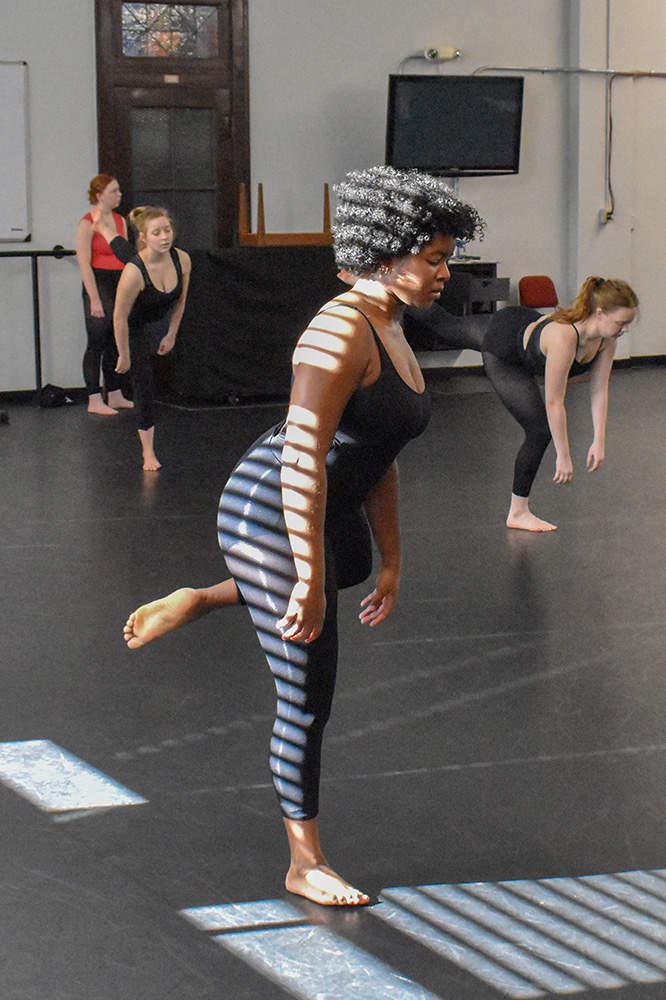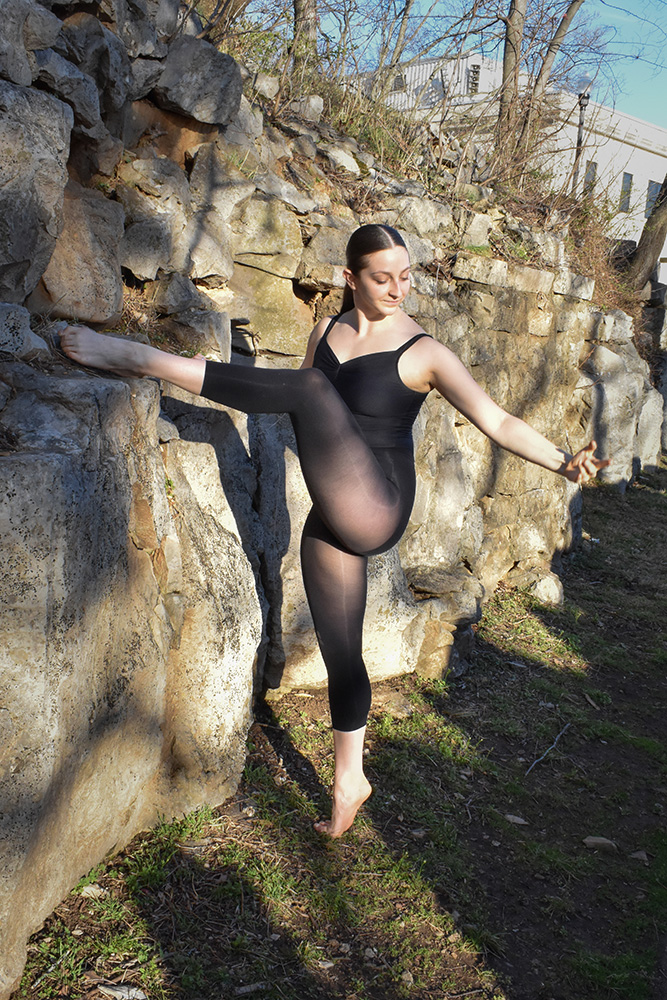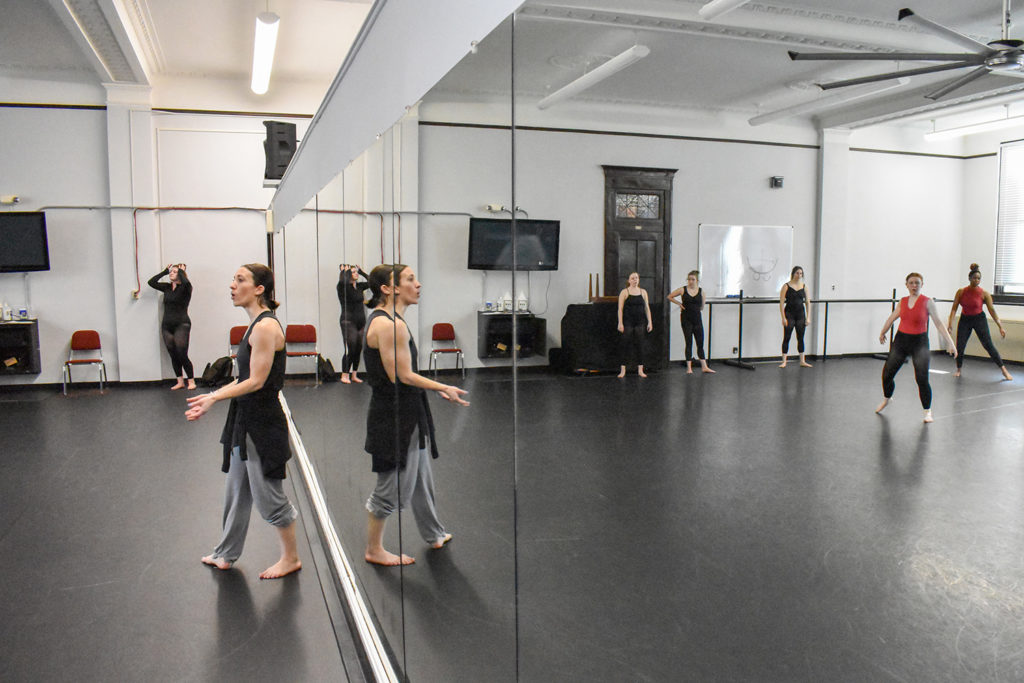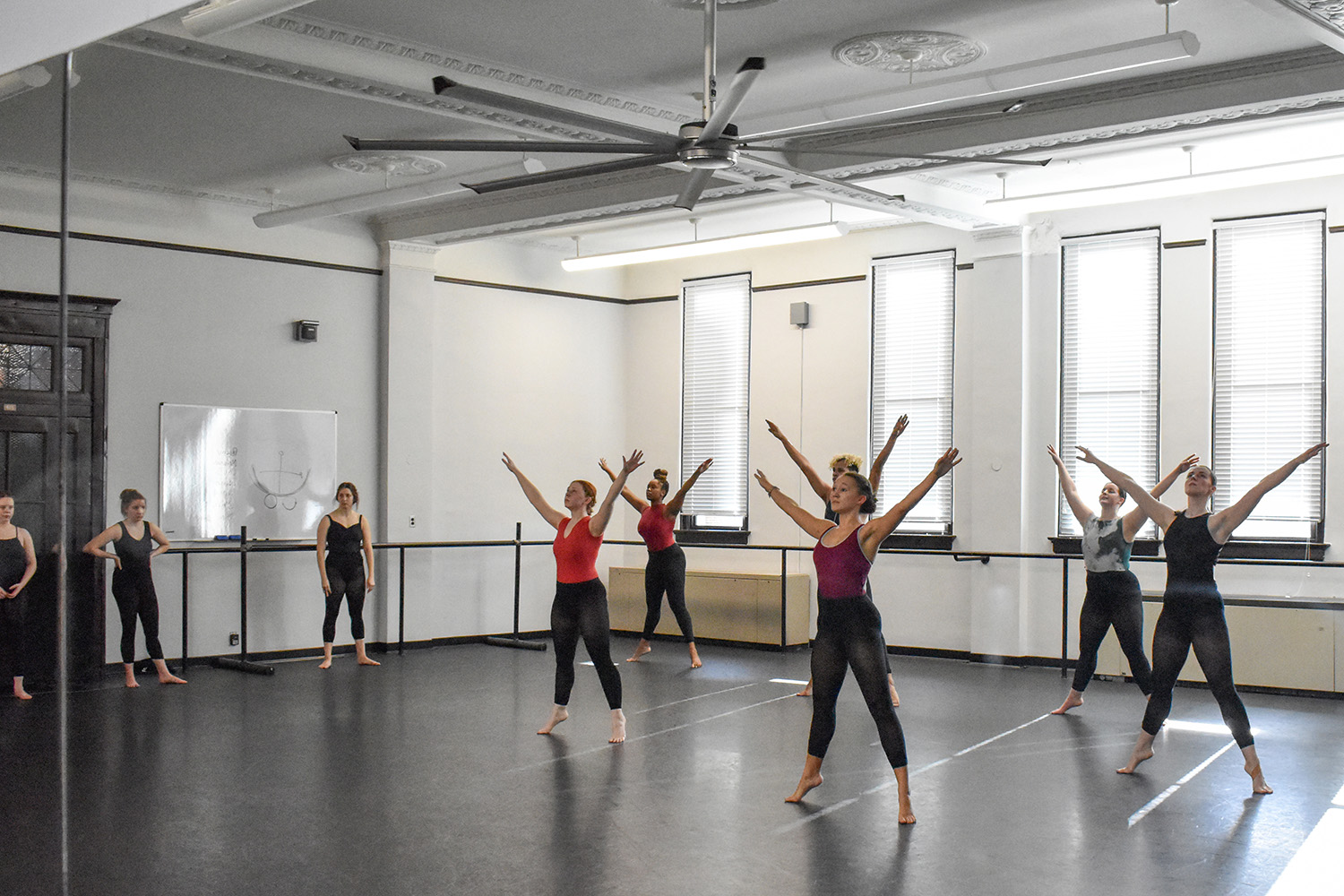Performing on stage can be a surreal experience, facing a crowd and showcasing a piece of one’s heart.
Nashville senior Chelby Woods said she still gets nervous before performing.
“For me, when I dance, there’s always a level of myself being portrayed, so it’s personal,” Woods said. “We all have our little things; like, for me, I’ll close my eyes. I’ll center myself, and I’m like, ‘OK, you’re gonna go on stage; you’re gonna do this.’”
Woods is the president of WKU’s chapter of the National Dance Education Association, a student-organized dance advocacy group that helps plan dance events around WKU and the local community.
“I started dancing because I genuinely love to move. I love the way that I feel,” Woods said.
Florence junior and National Dance Education Association vice president Sophie Jones said that dancers can go into autopilot while performing.
“I get on stage and hear the music, and I just hope that my body goes and all I have to focus on is performing,” she said.

Jones said she has gotten used to performing throughout her career and imparting what she rehearsed to an audience.
“I used to be terrified because it’s nothing like how you rehearse, but now it’s second nature,” Jones said. “And it’s definitely more fun as I’ve done it more often. I go blank, honestly, but it’s a fun blank, like a wave and then you come offstage and you’re like, ‘Wow, I just did a whole 10 minute piece.’”
Woods said that audience engagement is important to any dance performance and that she prefers a smaller audience.
“You get that intimacy that isn’t exactly displayed when you’re so far from the audience,” Woods said. “For some people, it’s really intimidating. For me, it just makes me feel comfortable because I really feel like I can connect and really portray what I’m trying to say, what the choreographer is trying to say.”
Woods said that intimate settings make dance feel like a conversation.
“I’ve had people tell me how much it moves them, because you never know if what you’re trying to portray is the same as what someone else could possibly be going through,” Woods said.
Atlanta sophomore and National Dance Education Association member Shannon Maloney said that she draws her energy from the crowd, and an unengaged audience is called a “dead crowd.”
“You definitely don’t want a dead crowd because you, as a performer, want to be appreciated for the work you’ve put in and the performance you’re putting forth,” Maloney said.
Jones also said that a quiet audience is not fun.
“It’s kind of disheartening. And you have to force yourself to keep going,” Jones said.
Jones said that sometimes she hears unexpected audience reactions, such as audiences that would laugh at serious pieces.
During the COVID-19 pandemic mask mandates, Jones said it was a challenge performing on stage with a mask because the crowd couldn’t see her facial expressions.
“But now without the masks, I recently just did a piece called ‘Marionettes’ where we made sounds on stage, which is very goofy,” Jones said. “Hearing the audience reaction, especially laughing, is my favorite because at least they’re receiving the dance somehow in a way that entertains them.”
Maloney said she enjoys the physical aspect of dance and that it helps her feel stronger.
“I struggle a little bit with anxiety and depression, and I have for a very long time, and what that does to me is it makes me feel weak,” Maloney said. “And when I do these incredible athletic feats, when I can jump, when I can turn, when I can roll, when I can flip, it makes me feel strong and powerful in a way I don’t often get to.”
Maloney said she feels authentic on stage.
“It feels like I am embodying something else,” Maloney said. “Religious or not, it feels like something is speaking through me; I’m relating something greater than myself.”
Jones said that when she was younger, she liked dance as a way to use energy. As she grew up, she said she became more interested in dance as an art. Jones said she enjoyed learning how different movements can mean different things.
Maloney said that in performances, dancers often get pushed past their normal limit.
“In rehearsal, teachers always want to make sure their students are going full out so the adrenaline rush doesn’t push them past their limit to the point where they injure themselves on stage,” Maloney said.

Woods said that for her, the act of performing is not too different from rehearsals.
“I find what I love in the movement; I find what I love dancing with my peers,” Woods said. “The biggest difference is people actually get to see that now. They get to see the fun; they get to see the work.”
Woods said that it is important to be prepared to perform in front of an audience.
“When you’re in rehearsal, a lot of the time it’s just you and the mirror and you and your peers, so you feel a lot more comfortable,” Woods said. “The first time that you’re on stage, you’re like, ‘Oh, wow, there are people looking at me now.’”
Jones said dancers practice in front of a mirror in rehearsal, and the mirror is used to see the other dancers practicing. She said that it also helps them judge how far they are moving, as when they face away from a mirror, dancers can accidentally shift their position.
“Rehearsal is where you’re supposed to make mistakes, and it’s where you’re supposed to be figuring things out as you go,” Jones said.
Woods said that she once choreographed a dance piece that compared fear and dance. She gave ink blot tests to dancers and instead of telling her their answers, they would create a movement set of eight counts.
“I feel like a lot of the time when you’re looking at dance, people just see it as a form of entertainment, but dance can be scientific; dance can be historical — it’s all of those things,” Woods said. “So to be part of something that spreads the importance of it to everyone else is very special to me.”
Jones has choreographed pieces for fun and for class. For a class assignment, she said she was graded on a piece she created as well as how she taught it. Her piece was recently performed for the last time at a dance conference in Alabama.
“It was kind of sad because I just put all that work into a piece and then it’s gone,” Jones said.
Woods also created a piece for a previous student workshop called “Kasumba Mimi Si,” which is Swahili for “Stereotype I’m Not,” she said. The piece focused on four women breaking away from the stereotypes people expected of them.
“A lot of my work definitely has a piece of me in it, but that piece in particular reflected who I was and what I was going through at the time,” Woods said. “Oftentimes for me, before I can even utter a word, how I look is the very first thing that is perceived.”
Woods said that piece was emotional and personal for her.
“When it comes to being respected, when it comes to your education, when it comes to trying to make relationships, that pushback can be a tad difficult,” Woods said. “Instead of being upset, I chose to put it into a piece and put it in a different perspective.”

Woods said she had individual conversations with her dancers to prepare them for that piece. She asked the dancers what kind of stereotypes they had faced.
“It takes a level of courage to display a story like that without crying,” Woods said. “A lot of people don’t want to tell that side of the story. It’s uncomfortable.”
Woods said that the piece was a collective effort between the dancers, like a puzzle they all contributed to.
“I think all of us gained this newfound respect for each other,” Woods said.
Jones said she wants to continue performing after college.“I’m planning to audition to a whole bunch of different companies to hopefully get a job so I can perform and make money as an adult,” Jones said. “My main goal is to perform as long as possible.”



